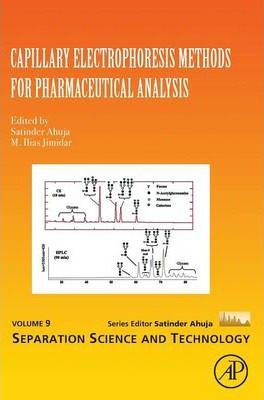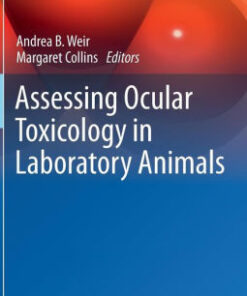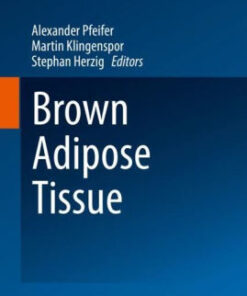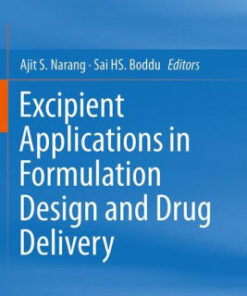(PDF) Capillary Electrophoresis Methods for Pharmaceutical Analysis By Satinder Ahuja
$22.00
Download instantly Capillary Electrophoresis Methods for Pharmaceutical Analysis By Satinder Ahuja, M. Ilias Jimidar. It is ebook in PDF format.
ISBN-10: 0123725739 ISBN-13: 9780123725738
Preview
This is the PDF eBook version for Capillary Electrophoresis Methods for Pharmaceutical Analysis By Satinder Ahuja, M. Ilias Jimidar
Table of Contents
Contributors
Chapter 1. Overview of capillary electrophoresis in pharmaceutical analysis
I. Introduction
II. Various modes of CE
III. Instrumentation
IV. Method development for pharmaceutical analysis
V. Analysis of active pharmaceutical ingredients and drug products
VI. General considerations for improving performance of CE methods
VII. Current regulatory guidance
VIII. Qualification of capillary electrophoresis instrumentation
IX. Robustness tests of CE methods
X. Validation of analytical methods
XI. The need for CE methods in pharmacopoeias
XII. CE in impurity profiling of drugs
XIII. Ion analysis using capillary electrophoresis
XIV. Role of CE in biopharmaceutical development and QC
XV. Capillary electrophoresis and bioanalysis
XVI. CE as an orthogonal technique to chromatography
XVII. Capillary electrochromatography of pharmaceuticals
XVIII. Coupling CE and microchip-based devices with mass spectrometry
References
Chapter 2. Theoretical considerations in performance of various modes of CE
I. Introduction
II. Basic CE configuration
III. CE characteristics
IV. Principles of CE
V. Methods and modes in CE
VI. Summary and conclusions
References
Chapter 3. Equipment considerations for capillary electrophoresis
I. Capillary electrophoresis instrumentation
II. Equipment-related issues
III. Validation and compliance requirements
IV. Future developments
V. Summary
References
Chapter 4. Method development for pharmaceutical analysis
I. Introduction
II. CE method types used in QC testing
III. Method development process
IV. Planning phase
V. Method development and optimization
VI. System suitability tests and limits
VII. Draft method description and method evaluation phase
VIII. Method validation phase
IX. Method transfer phase
X. Method performance monitoring and feedback
XI. Summary and conclusions
References
Chapter 5. Role of CE in drug substance and drug product development
I. Introduction
II. When should CE be applied in drug development?
III. Capillary electrophoresis in the drug development process, from candidate selection to the mark
IV. Pharmaceutical substances in literature
V. Summary and conclusions
References
Chapter 6. General considerations to improve performance of CE methods
I. Introduction
II. Capillary
III. Electrodes
IV. Temperature
V. Preconditioning
VI. Injection
VII. Applied voltage
VIII. Background Electrolyte
IX. Detection and Signal Integration
X. Summary and conclusions
Acknowledgements
References
Chapter 7. Overview of current regulatory guidance
I. Introduction
II. Regulatory guidance documents
III. Capillary electrophoresis in pharmacopoeias
IV. Conclusions
References
Chapter 8. Qualification of CE instrumentation
I. Introduction
II. Parameters for Qualification
III. Computer System
IV. Keeping the Instrument qualified
References
Chapter 9. Robustness testing of CE methods
I. Introduction
II. Aims/objectives and steps in a robustness test
III. Selection of factors and levels
IV. Selection of experimental designs
V. Selection of responses
VI. Planning and execution of experimental work
VII. Analysis of results
VIII. Determination of SST limits
IX. Review of case studies
X. Summary and conclusions
References
Chapter 10. Validation of analytical methods using capillary electrophoresis
I. Method validation
II. Instrument qualification
III. Method transfer
IV. Summary
Abbreviations
References
Chapter 11. The need for CE methods in pharmacopoeial monographs
I. Introduction
II. Key factor for the development of a robust CE method and validation
III. Overcoming the problem of low sensitivity
IV. Methods in the European pharmacopoeia
V. Chiral analysis
VI. Conclusions
Acknowledgements
References
Chapter 12. CE in impurity profiling of drugs
I. Introduction
II. Overview of CE applications in impurity profiling
III. Concluding remarks
References
Chapter 13. Ion analysis using capillary electrophoresis
I. Introduction
II. General principle
III. Method development and optimization
IV. Applications
Case Study I. Example of counterion determination
Case Study II. Example of a feasibility study for impurity profiling
V. Conclusions
References
Chapter 14. Role of CE in biopharmaceutical development and quality control
I. Introduction
II. Method development and qualification
III. Method transfer
IV. Method performance in QC environment
V. Lessons learned
VI. Conclusions
Acknowledgments
Appendix. Troubleshooting examples
References
Chapter 15. Capillary electrophoresis and bioanalysis
I. Introduction
II. Capillary electrophoresis sodium dodecyl sulfate (CE-SDS)
III. Effect of sample preparation on CE-SDS and SDS-PAGE analysis of rMAbs
IV. Capillary zone electrophoresis
V. Capillary isoelectric focusing
VI. Carbohydrate analysis by CE-LIF
VII. CE and quality control testing of therapeutic proteins
VIII. Conclusions
Acknowledgments
References
Chapter 16. CE as an orthogonal technique to chromatography
I. Introduction
II. Orthogonal chromatographic systems
III. CE as an orthogonal technique
IV. Conclusions
References
Chapter 17. Capillary electrochromatography of pharmaceuticals
I. Introduction
II. Factors affecting the electrophoretic and chromatographic parameters in CEC
III. Column technology in CEC
IV. Types of columns used in CEC
V. Analyte detection in CEC
VI. Applications of capillary electrochromatography
VII. Two-dimensional separations
VIII. Validating CEC methods for pharmaceutical analysis
IX. CEC-prospects and potentials
References
Chapter 18. Coupling CE and microchip-based devices with mass spectrometry
I. Introduction
II. CE-MS coupling and instrumentation
III. Applications
IV. Quantitative Aspects
V. New devices
VI. Summary and conclusions
Abbreviations
References
Index




